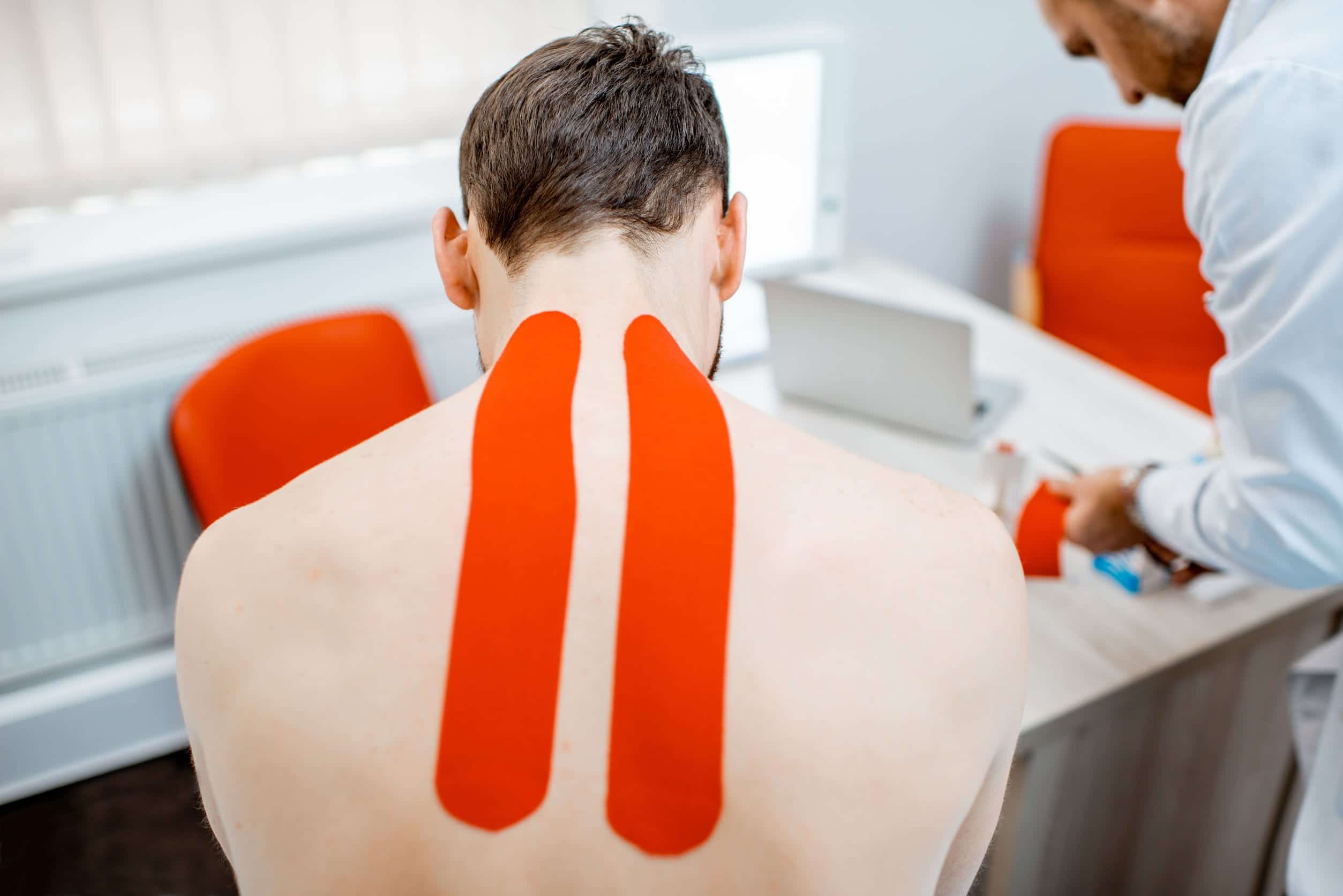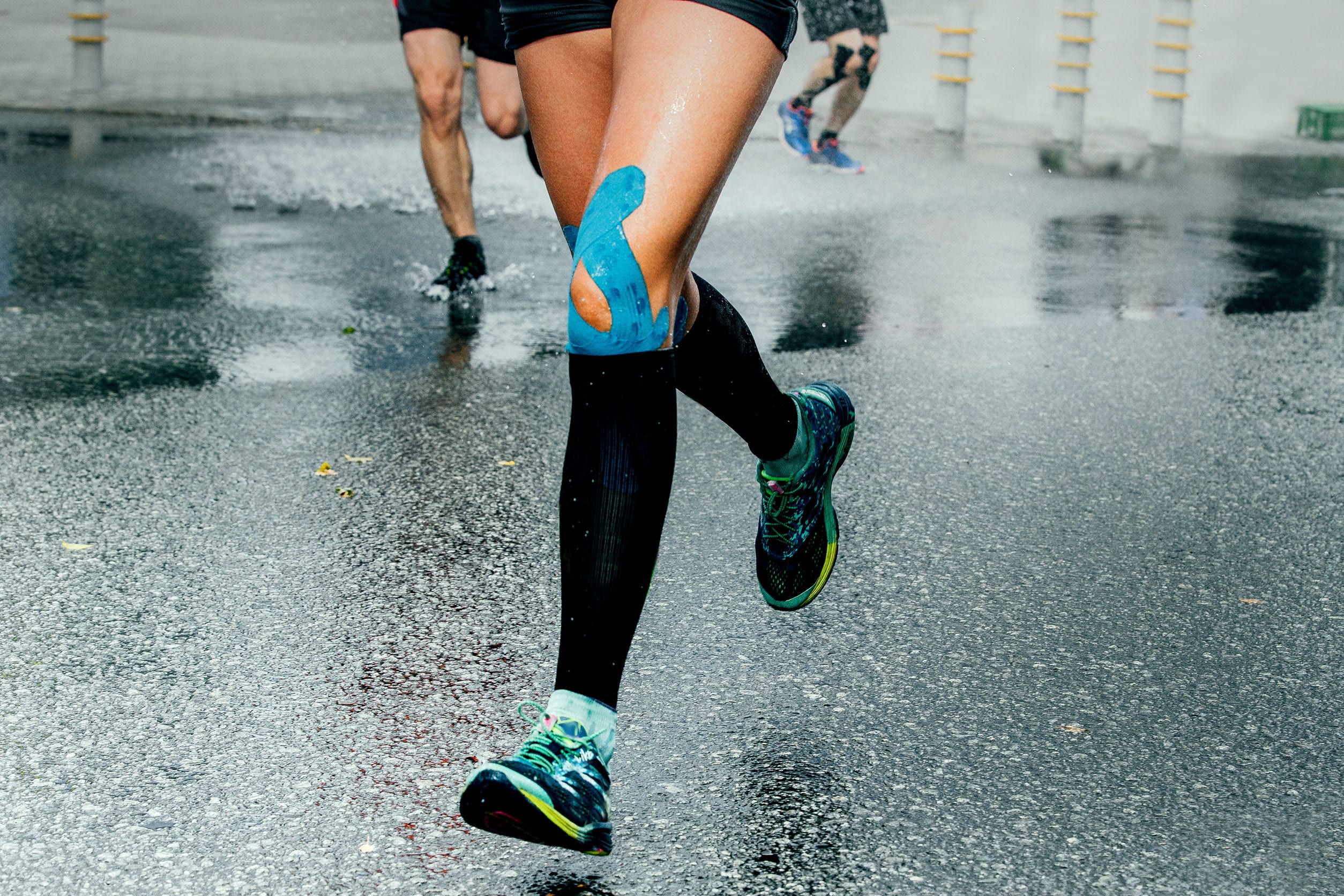PREVIOUS POST
Physical Therapy Can Help With These Types of Accidents

Please fill out the form below and we will be in touch soon.

Physical Therapy Can Help With These Types of Accidents

Tennis Injuries: Why Chiropractic Is the Answer for Many of Them

Anyone who works out can relate to stiff joints and sore muscles, especially after heavy workout sessions. Sometimes, these aches become so overwhelming that you might be forced to halt future workouts as you wait for your muscles and joints to recover.
Effective taping is one option that may help you recover more comfortably and quickly. The practice of Kinesio taping is now a growing trend, and Kinesiology tapes are particularly popular in professional sports and athletics. You might have noticed some athletes’ colored kinesio tapes skillfully plastered over their bodies.
The big question nonetheless is whether or not the practice actually helps heal muscles and joints. So we decided to investigate.
These often colorful tapes are created based on the principles of kinesiology, the study of movement. Japanese chiropractor, Dr. Kenso Kase is the man behind the concept (and brand, Kinesiotape) and many of the techniques used in Kinesio taping today.
Kinesio tapes are thin elastic cotton strips designed to closely match the wearer’s skin texture and movements. Each tape has a special adhesive applied to it which is entirely different from other tapes used for muscle related injuries.
They don’t need to be wrapped around the injured limb. The tape is simply applied directly onto the injured part, thereby delivering effective, and localized relief. Because each tape takes to the wearer’s skin — and is very skin-like itself — it can be worn for up to 5 days.
A significant benefit of Kinesio tapes is that they are highly convenient. You can shower, swim, and take baths with your tape still on. All it requires is a quick pat-down with a clean, dry towel afterward, and you are good to go!
Theoretically, when applied on the skin above an inflamed or injured muscle, fascia or joint, a kinesiology tape creates a microscopic lifting and tagging effect on the skin. In so doing, the tape decompresses the area and slightly lifts the underlying fascia.
The net effect is increased blood flow to the injured or inflamed muscle or joint. When blood flow is increased, there’s improved elimination of the inflammatory agents which leads to speedy healing.
Kinesio tapes are also thought to enhance lymph fluid circulation and thus may also aid in reducing swelling after injury. These tapes seem to interfere with pain receptors and pain relay systems as well; hence, they are quite useful in pain management.

At their inception, Kinesio tapes were predominantly used to improve mobility and support injured, muscles, joints, and tendons. Their use in physical therapy still hasn’t been diminished in recent years. Some of the common therapeutic uses of kinesiology tapes today include:
Kinesiology tapes have numerous other clinical applications that are used alongside these treatments and modalities.
Today, Kinesio tapes are no longer a reserve for patients in physical therapy. They are now regularly used as an alternative to the traditional white athletic tape in countless sporting activities. Many sports personalities swear by Kinesio tapes for such things as:
The sudden boom in Kinesio tape usage in sports and athletics is due to increased awareness about its specific sports benefits. Kinesio taping will, for instance, reduce the risk of an ankle injury significantly. It will also improve joint position sense and enhance the brain’s proprioception.
Like every other therapeutic intervention, some people respond exceedingly well to Kinesiology tape while for others, the tape doesn’t work as expected.
Nonetheless, many indicators show that Kinesio taping can be very helpful in treating musculoskeletal injuries, particularly those related to sports and personal workout. Therefore, Kinesio tape lends to use for lower back pain, shoulder impingement, plantar fasciitis or for dulling muscle aches among many other things.
Although their usefulness has been noted both in recreational and elite sports where they’ve helped many individuals quickly restore their desire functional levels after injury, Kinesio tapes appear to work best for minor injuries. Traumatic injuries as major rotator cuff tears, torn ACLs, and fractures require more in-depth treatment.
They are waterproof, so it stays on even in the bath. They are elastic, and thus, they don’t restrict your mobility, which is great for your training. The list goes on, but the key point is that Kinesio tapes make people feel better faster. There’s certainly no harm in giving them a shot!

Just remember that you are more likely to benefit from Kinesio taping if you seek professional guidance with your taping. Proper evaluation and assessment are also crucial in helping lay out the ideal taping protocol for you.
About the Author:
Dr. Singer has been a practicing chiropractor for more than 20 years, and USA Health & Therapy has been around since 2004. Over the course of his career, Singer has helped tens of thousands of people with all kinds of issues by using a wide variety of treatment strategies. He has extensive knowledge of chiropractic modalities, including Gonstead, Diversified, Thompson Drop Table, and Activator, and in 1997 he earned a special adjunctive Chiropractic Certification in Spinal Trauma (CCST) to better provide care for car crash victims. Dr. Singer is licensed to practice chiropractic medicine in both Florida and New York.